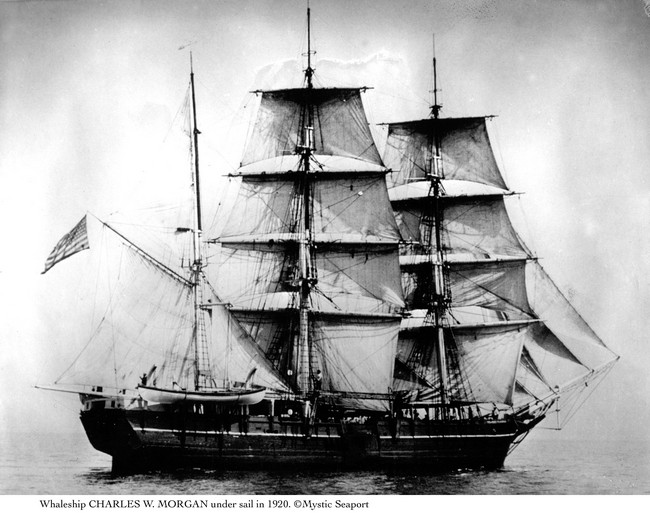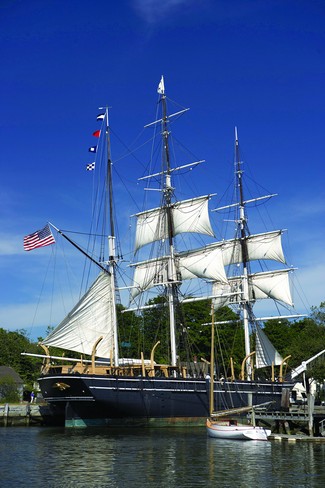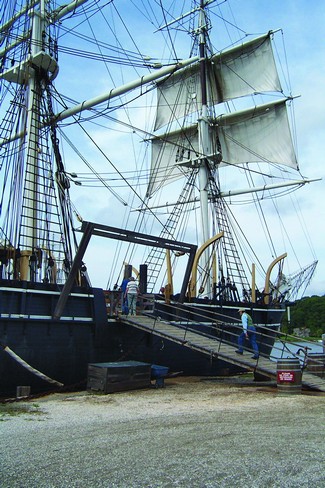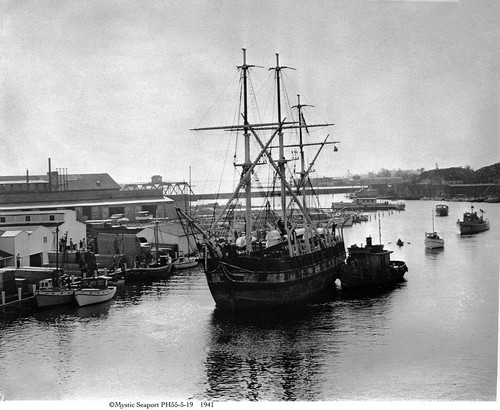The Charles W. Morgan
Restoring an Historic Icon
Mystic Seaport The museum of America and the Sea Mystic, CT

VISITORS to Mystic Seaport this summer will have their last chance to see the Charles W. Morgan floating in the water for approximately three and a half years.
That’s because the Morgan – the Museum’s flagship vessel – is set to undergo a multi-million dollar restoration campaign later this fall.
One of four National Historic Landmark vessels at Mystic Seaport, the Charles W. Morgan is the last wooden whaler in the world. Built in New Bedford, MA, in 1841, the Morgan made 37 voyages over her 80-year whaling career, which concluded in 1921.
It was 20 years later, in 1941, that the vessel arrived at her current home along the 19-acre waterfront campus of Mystic Seaport – The Museum of America and the Sea in Mystic, CT. Upon her arrival at Mystic Seaport, the Morgan transformed the Museum into one of New England’s leading tourism destinations.
And now, more than 60 years after her arrival at Mystic Seaport, the Museum is preparing for the most ambitious restoration project on the Morgan to date. The 167-year old whaling ship will be hauled from the Mystic River this fall, setting the stages for the restoration work.
The first portion of the restoration will be the downrigging of the vessel, to start sometime in July.
"We usually uprig the boat in spring so she can fly sail, but we’ve been taking rig off, cataloguing it and surveying it," said Quentin Snediker, director of the Museum’s Henry B. duPont Preservation Shipyard
For the past several years, Snediker has overseen the careful selection of woods for restoring the Morgan’s framing, deck and planking. The Museum has stockpiled more than 200 tons of Live Oak timber from the gulf coast of Mississippi – timber felled by Hurricane Katrina in 2005.
“The beauty of a wooden ship is that its parts are organic, and it can be renewed indefinitely,” said Snediker. “By using wood from Katrina in the restoration, we are able to preserve a piece of American history by giving new life to these fallen Live Oak timbers.” Live Oak, which grows from Virginia to Texas, is a protected species and only becomes available to the Museum after a natural disaster such as Katrina or a road-building project that requires tree removal.


In preparation of hauling the vessel, the Museum dedicated the $6 million Hays and Roz Clark Shiplift in July 2007. State and private funding paid for the new shiplift, which has already hauled out some of the Museum’s big- and not-so-big-timber vessels such as the National Historic Landmark vessel Emma C. Berry and dragger Florence.

Mystic Seaport PII55-5-19 1941
Phase two of the ship lift project, a railway system to shift vessels from the ship lift to the main shipyard work area was completed in early 2008. By summer, Snediker hopes to have additional shipwrights and apprentices for the restoration work. After hauling, the Morgan’s bottom will be washed and then its one-inch-thick pine sheathing will be removed.
The vessel will then be side-tracked on the railway system, placing it in the south end of the Museum’s shipyard, which will be her home for the duration of the restoration process. Inner planking, frames, hardware and more will be restored and renewed during the next phase of the project.
Despite the restoration work, the Morgan will still serve as an exhibit throughout the process. “Visitors will be able to see work in progress,” Snediker said, adding that mobile scaffolding and a display shelter will allow visitors to watch the process safely.
